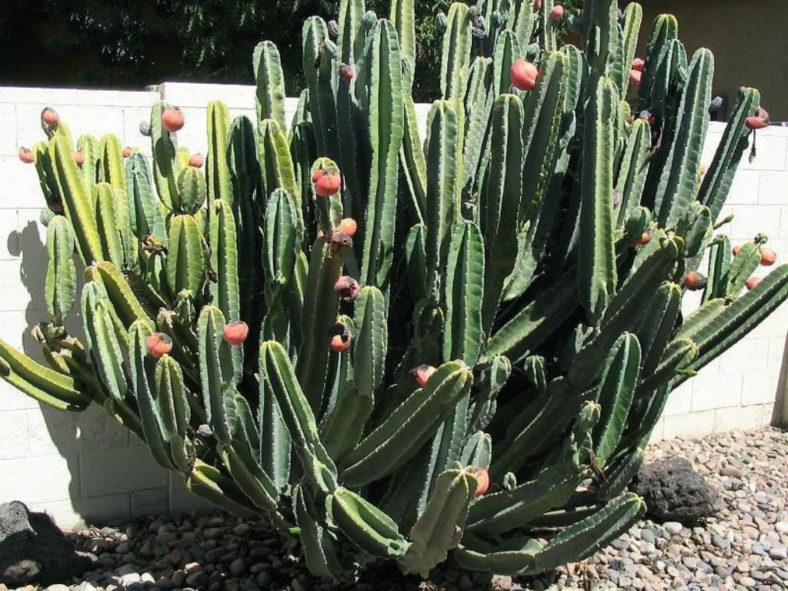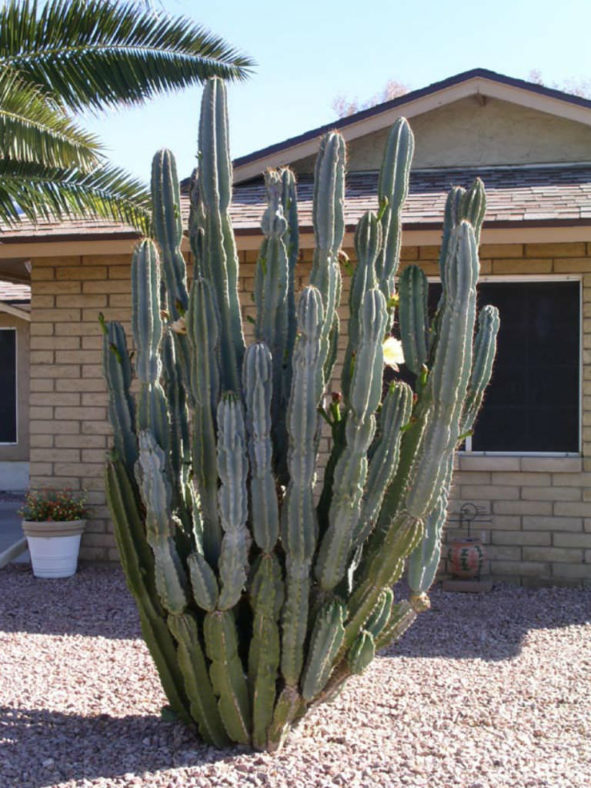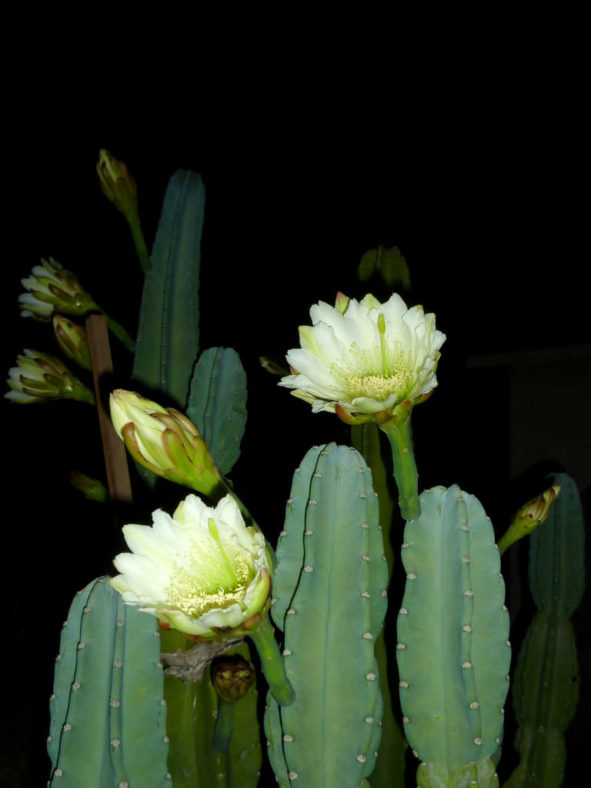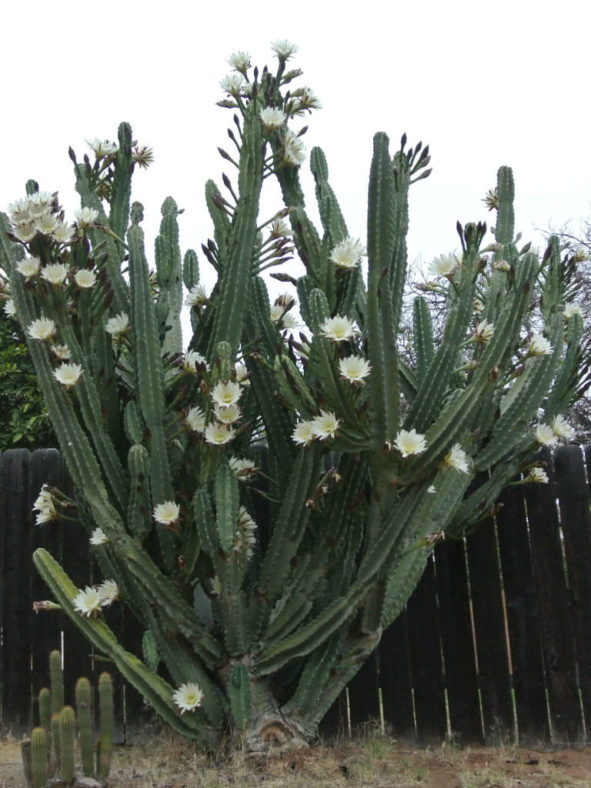Scientific Name
Cereus hildmannianus K. Schum.
Common Name(s)
Andes Organ Pipe, Column Cactus, Hedge Cactus, Hildmann's Cereus, Peruvian Apple, Peruvian Apple Cactus, Queen of the Night, Spiny Tree Cactus
Synonym(s)
Cereus hildmannianus subsp. hildmannianus
Scientific Classification
Family: Cactaceae
Subfamily: Cactoideae
Tribe: Cereeae
Genus: Cereus
Etymology
The specific epithet "hildmannianus (hild-man-ee-AH-nus)" honors Heinrich Hildmann, a German cactus dealer and expert.
Origin
Cereus hildmannianus is native to South America (Argentina, Brazil, Paraguay, and Uruguay).
Description
Cereus hildmannianus is a shrubby or tree-like cactus with many blue-green to dull green branches with 4 to 6 ribs. It grows up to 50 feet (15 m) tall. The mature plants usually have a woody trunk below the lowest branches. The trunk can grow up to 6.6 feet (2 m) tall and 3 feet (90 cm) in diameter. The branches can reach up to 6 inches (15 cm) in diameter. They are usually spineless but sometimes have a few short golden or brown spines.
The white or yellowish-white flowers appear from late spring to early fall, open at night, and remain open the following day. They can reach up to 12 inches (30 cm) in length and 6 inches (15 cm) in diameter. The edible fruits are egg-shaped, measuring up to 2.4 inches (6 cm) in diameter, and change color from green to pinkish-red.
This species is very similar in appearance and is often confused with Cereus repandus. As a result, it is frequently mislabeled as Cereus peruvianus, a synonym of Cereus repandus.

How to Grow and Care for Cereus hildmannianus
Light: Cereus cacti like full sun. They can handle partial shade but thrive during the summer in direct sunlight. Sunny south, east, or west window is a good spot to grow a Cereus indoors.
Soil: These cacti do not like to have "wet feet" and need to be grown in well-draining soil. Use commercial soil mixes for cacti and succulents, or make your own potting mix.
Hardiness: Cereus hildmannianus can withstand temperatures as low as 25 to 50 °F (-3.9 to 10 °C), USDA hardiness zones 9b to 11b.
Watering: From spring to fall, during the active growth period, water thoroughly, but allow the soil to dry out before watering again. With the arrival of fall, gradually reduce the watering frequency.
Fertilizing: During their growing season, Cereus cacti like regular fertilizing. A balanced, water-soluble fertilizer, diluted to 1/4 strength, can be added to each watering. Do not feed during the winter.
Repotting: While Cereus cacti are young, it is recommended that they be repotted each year in early spring to provide fresh soil, inspect the root system, and move them to larger pots if necessary.
Propagation: Using stem cuttings is the easiest method to propagate Cereus because seed propagation is a slow process.
Learn more at How to Grow and Care for Cereus.
Toxicity of Cereus hildmannianus
Cereus cacti are non-toxic to humans or animals.
Subspecies of Cereus hildmannianus
Links
- Back to genus Cereus
- Succupedia: Browse succulents by Scientific Name, Common Name, Genus, Family, USDA Hardiness Zone, Origin, or cacti by Genus
Photo Gallery
Click on a photo to see a larger version.


